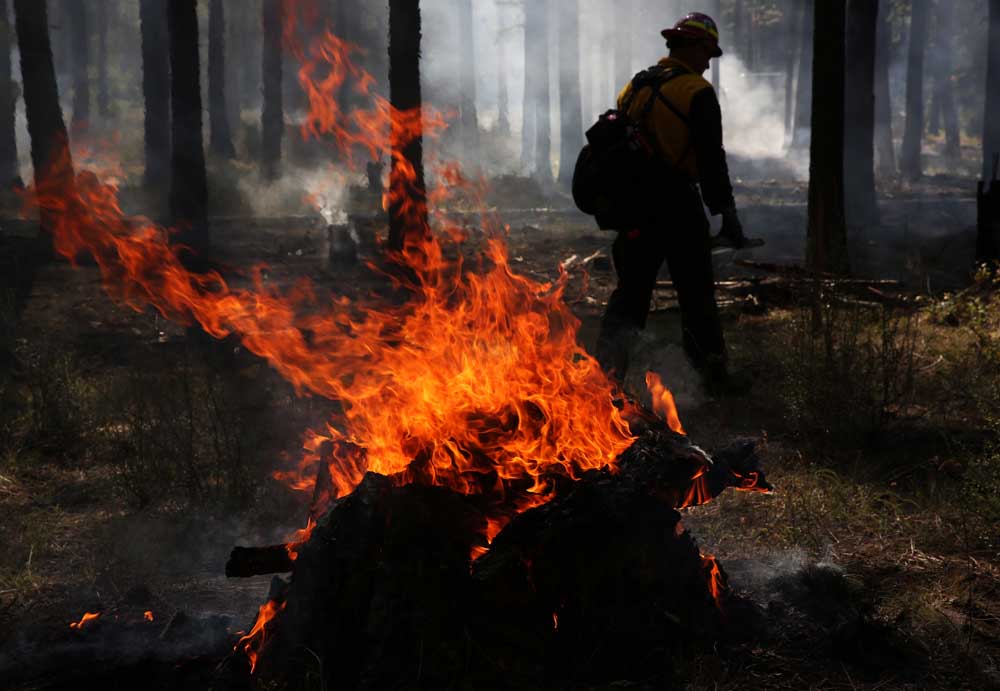Nicaragua trip makes impression on RPA students
Published 12:00 am Wednesday, February 7, 2018

- Redmond Proficiency Academy students Viktoria Sargent (left) and Ezekiel Field and teachers Julie O'Neill and Brett Andry recently returned from a January term class in Nicaragua. (Geoff Folsom/Spokesman photo)
The realization came to Redmond Proficiency Academy teacher Julie O’Neill while she swam in a volcanic lake in Nicaragua.
“All of a sudden it dawned on me — ‘You guys, this is our classroom,’” she recalled telling her 13 students. “We were learning in such an open, out of the box way. It really hit me hard.”
The swim was the culmination of a Jan. 10-19 trip that was part of a January term class, which are three-week classes tailored to the interests and ability levels of students at the pubic charter school. The trip combined learning, giving back and a little bit of leisure in the Central American country, considered the second poorest (behind Haiti) in the Western Hemisphere.
“It’s a great opportunity to take a fun class, while still getting the credit you need,” said senior Viktoria Sargent, 17.
This was the second visit to Nicaragua for O’Neill, who went on a service trip with her family in 2011.
“I love Nicaragua,” she said. “I knew it would be an incredible experience to be able to see a Third World country and be able to serve.”
The group stayed on a ranch owned by the Perkins family, who used to own the Mustard Seed Cafe in Redmond. Though the RPA students were there for secular work, the ranch is usually used by church missions.
Each student was required to pay $1,500 for the trip, while the school pitched in another $13,000, O’Neill said.
For the students, the money was well worth it to experience a new culture with classmates.
“I think you get a closed view of what a country is when you do only things that you want to do,” Sargent said. “When you spend time with other people, you get to see the real thing.”
Helping others
After arriving late at night, the students woke up the next morning and began putting together more than 50 backpacks containing school supplies and uniforms for area children. O’Neill said those items are crucial in a country where many families make $2 a day or less.
“They pretty much don’t go to school unless they have a uniform and school supplies, so that can be life-changing,” she said.
Later that day, they visited a church, where they gave English-as-a-second language classes to two groups of students, one for 3-to-10 year olds and another for 10-to-20 year olds. Though the Nicaragua-based class is separate from the Spanish classes O’Neill regularly teaches, all but one of the students on the trip took Spanish, so they knew the language well.
“They modeled the way they do English camp on how we teach Spanish at RPA, which is full immersion,” O’Neill said. “(Nicaraguan students) loved the creative approach to learning, which they’d never experienced before.”
For the students, teaching Spanish was much different than speaking it.
“I learned a lot, and I know they learned a lot,” Sargent said.
The helping continued the next day, when the students helped a local woman prepare meals for 120 needy people. O’Neill said the woman collects donations to go toward the feedings, though she only makes about $60 a month.
They also assisted in picking and packing boxes of tomatoes, which workers typically get paid 25 cents a box for. O’Neill said the boxes are then sold to large store chains for $10 to $15.
“The up close and personal encounter with that kind of exploitation was difficult for us to see,” she said.
The students broke into groups to deliver the backpacks to homes around the area. Some had to hike several hours up hills to reach the Nicaraguan students.
“It’s hard to see that people do that trek every day,” said senior Elizabeth Roti, 17. “They aren’t on roads, it’s on a small, little trail.”
The children would beam when they got the backpacks, but then run to their bedrooms to open them, since it’s considered rude in Nicaragua to open presents in front of others, O’Neill said.
Learning lessons
On Sunday, the students got to see other parts of the country with a three-hour bus ride to Lake Nicaragua, but even the “tourism day” provided some valuable lessons. The hundreds of privately owned islands with luxury homes in the lake seemed a stark contrast to what they saw earlier.
“As you drive there, you see all these people who are well below the poverty line, and then you see all these islands people have purchased,” Sargent said. “It was a fast change from people who live on $2 a day to people who have their own island.”
They capped that day off by standing over Masaya, a live volcano.
“I think we may have seen lava, but it was really smoky, so it was hard to tell,” said senior Ezekiel Fields, 17. “We were prepared to bolt down the hill if the volcano exploded.”
The group spent Monday in the remote community of Santa Barbara, where some students picked corn to make tortillas. It was a time-consuming process, taking three hours to make 15 tortillas.
Others washed clothes in the river with locals.
They then went back to the school, where they prepared to paint the building with locals. They were surprised to see people prepping the walls by throwing water on them.
They started the next day with a trip to torture chambers at El Coyotepe, a political prison that was used by the Somoza family dictators and, briefly, the Sandinistas, from the 1940s until the 1980s. The facility held up to 800 prisoners at a time.
“You could still see blood on the wall,” O’Neill said.
Sargent noticed another stark contrast when the group went next to the Apoyo Lagoon natural reserve, a volcanic lake similar to Crater Lake. Except this lake is warm enough to swim in, which the students enjoyed doing.
“It felt almost wrong to go from such a morbid thing to, not even five minutes later, we were having a blast,” Sargent said.
The final full day in Nicaragua, before a 24-hour return trip, was spent in the capital of Managua, where the students were alarmed by a series of large steel art projects called the “Trees of Life.” The students said each of the trees has its own security guard, which they saw as another example of the inequality in the country.
“It’s hard to see that in comparison to a school with three rooms and old books,” Sargent said.
The students then visited a shopping mall, which O’Neill said was to show them that not all of the country was in extreme poverty.
Sargent and Fields found the Nicaragua trip so rewarding that they are planning to return for a month this summer, when they will work on a community project. They plan to raise money for the project, though they have yet to decide what it will be.
Sargent goes back to jumping in the volcanic lake as the point she realized the need to continue helping the people of the impoverished nation.
“It was one of those freeing moments, when I landed in the water,” she said. “I realized the importance of what we were doing and how we were affecting the individual lives, and how they affected my life.”
— Reporter: 541-548-2186, gfolsom@redmondspokesman.com









